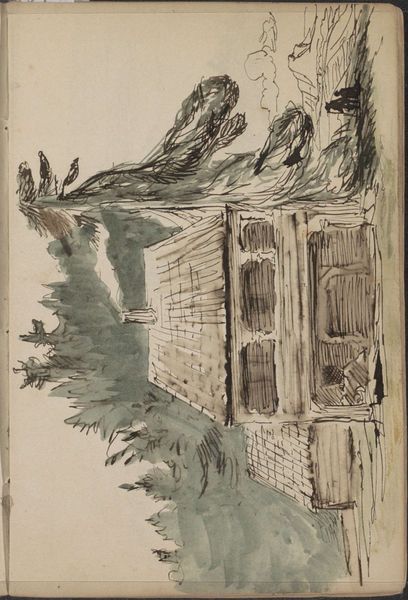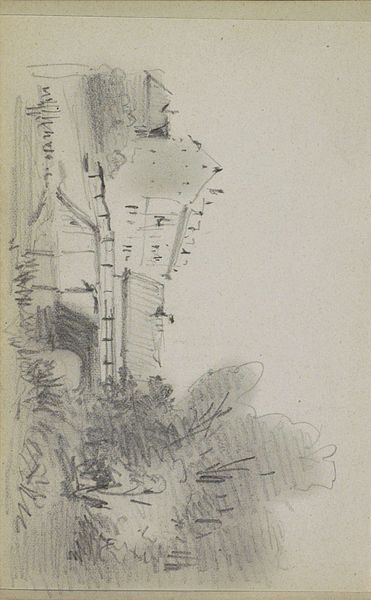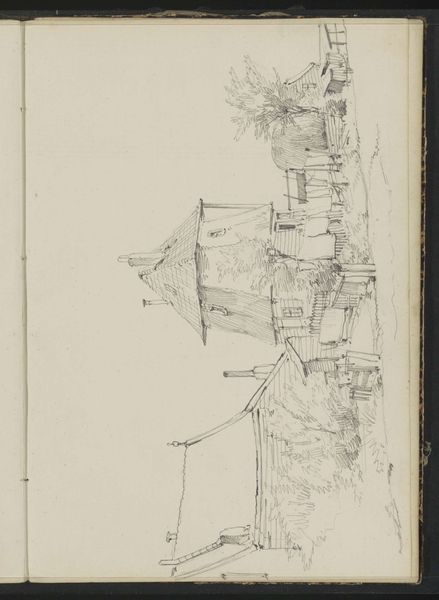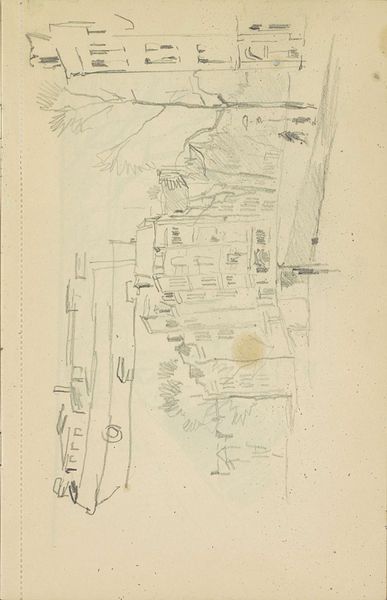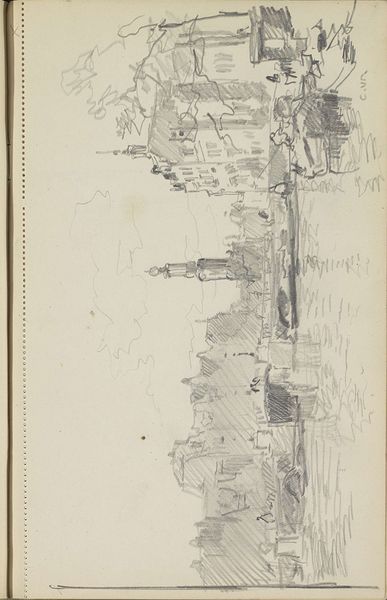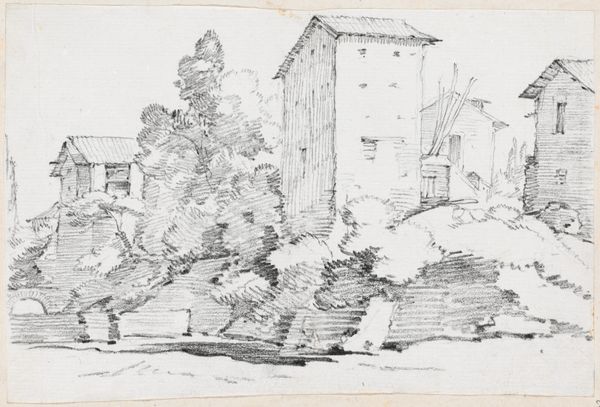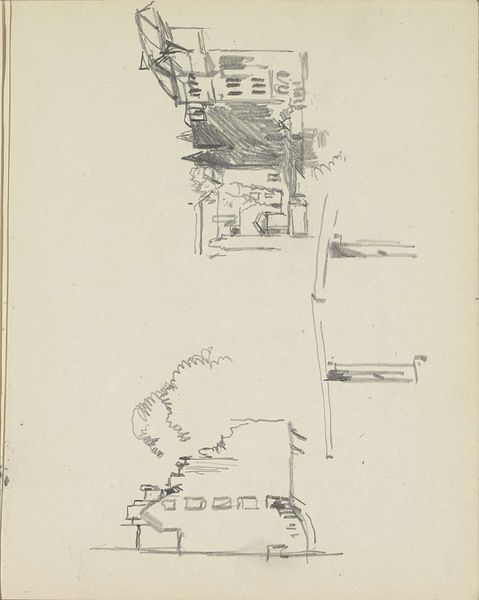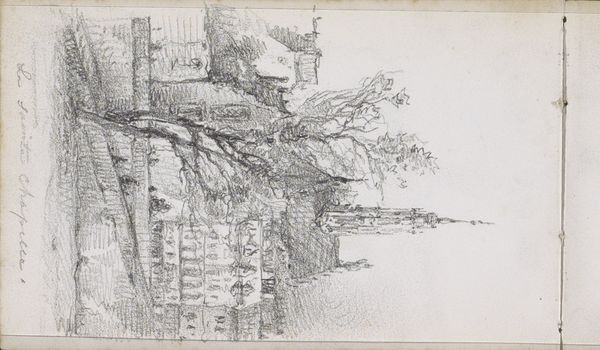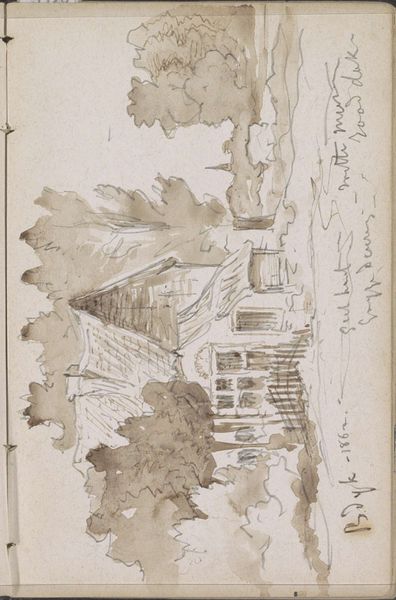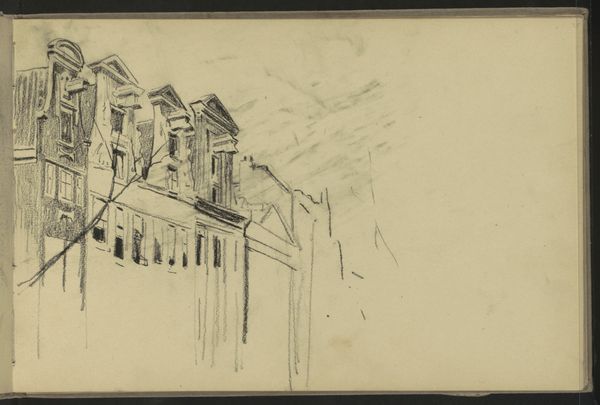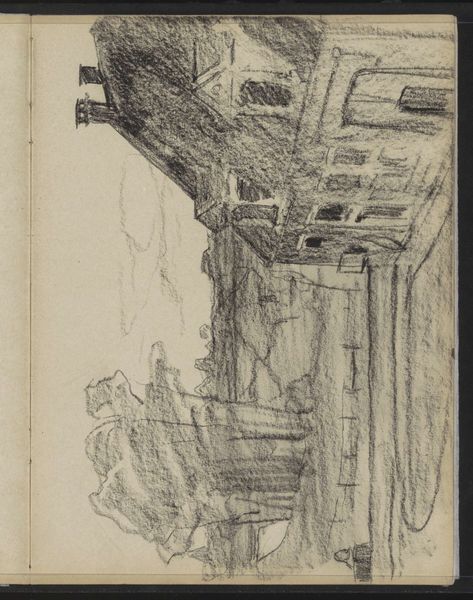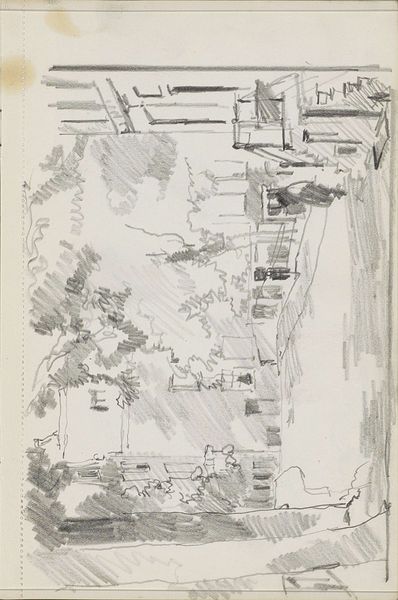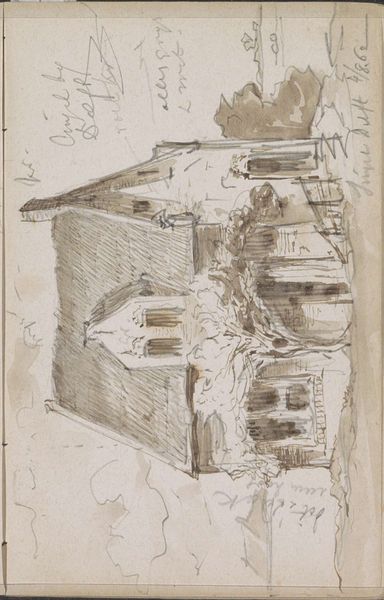
Copyright: Rijks Museum: Open Domain
Curator: We're now looking at "Mountain Landscape with Two Farmhouses" by Johannes Tavenraat, created in 1858. It's an intimate drawing using ink and watercolor, now residing at the Rijksmuseum. Editor: It's immediately striking. There’s an undeniable somberness to the composition, with the way the washes of ink coalesce into these stark architectural forms. A deep melancholy pervades, don't you think? Curator: Indeed. Observe how Tavenraat orchestrates depth, using delicate tonal variations. The layering of ink creates a nuanced perspective, highlighting the structures’ geometries while softening the verdant mountainside to the right with strokes of dilute watercolour. Editor: Farmhouses as containers of folk memory, almost totemic against this wild landscape. In older traditions, a building protects its inhabitants. Perhaps Tavenraat subtly hints at vulnerability, contrasting the human construct against nature's immensity. The lack of any inhabitants enforces this reading. Curator: You raise a fascinating point about vulnerability, particularly when contextualizing this within the Romanticism movement, it embodies its key concern for depicting subjective experiences in art and conveying personal emotions and individual thoughts. There is such interplay of structured buildings versus fluid lines creating organic nature; you have the line quality expressing these themes through pure technique. Editor: Note the trees flanking the structure, like sentinels, framing not just the building but the implied narrative of settlement and isolation. The cultural weight is palpable; buildings equal protection, yes, but what shelters and secrets do they hide? There's that feeling of time contained inside walls. Curator: And it’s all achieved through an incredibly economic use of materials. The suggestive quality, particularly evident in the foreground washes, is very compelling in conveying its landscape painting roots; each stroke placed precisely for maximum structural effect with minimal application. Editor: It’s a pensive piece; a landscape filled not just with natural forms, but layers of symbolic implications about man's relationship with the landscape. Curator: Absolutely. An encapsulation of an era through deftness of both material and form. Editor: Precisely. A moment caught, holding volumes of unspoken narratives within those lines.
Comments
No comments
Be the first to comment and join the conversation on the ultimate creative platform.
